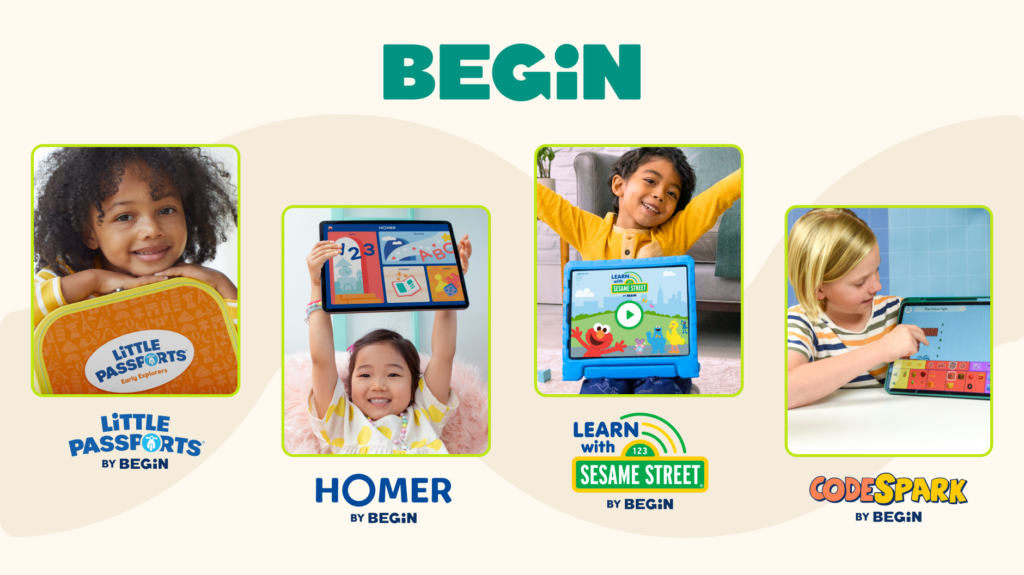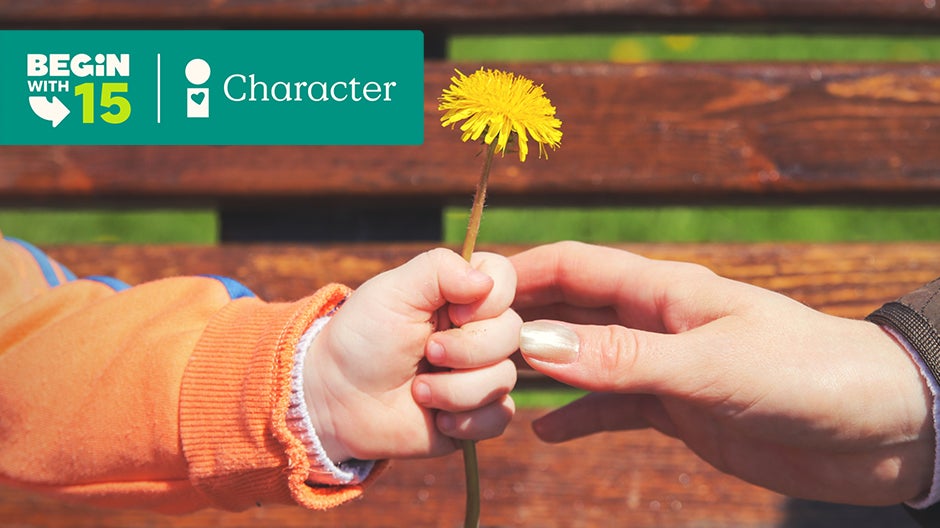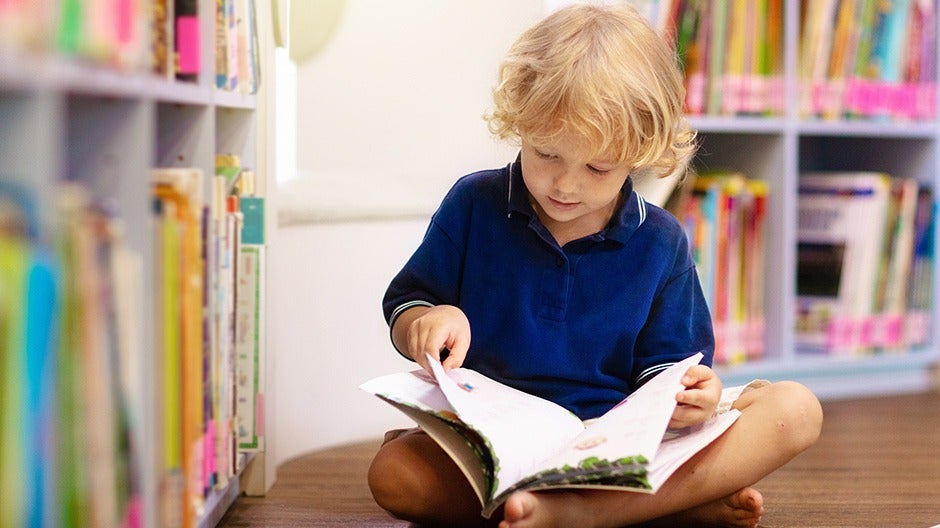When we think of kindness, we often think of being friendly, generous, and even considerate—and those attributes are important! However, beyond surface-level politeness lies something deeper than just being “nice.”
Looking for kindness activities to do with kids? We’re here to help!
The Short Cut
- Kindness is a cornerstone of Character, one of the 5 C’s that help kids thrive in school and life
- When teaching kindness activities to kids, focus on concrete, compassionate actions, and make sure to model kindness yourself!
- Parents can help by celebrating kids when they share that they’ve done something kind
- Developing the 5 C’s doesn’t need to be complicated. You can make a big difference in only 15 minutes a day!
What Does It Mean to Be Kind?
Kindness means thinking and caring about other people and their feelings and acting with them in mind. We hope that our kids don’t just notice when a classmate is sad, but take action to try to make the person feel better!
Kindness is a cornerstone of a person’s Character, part of the 5 C’s that help kids thrive in school and life. Developing a strong personal Character is just as important for a child’s early learning as Core skills like reading and math (another of the 5 C’s). Kids with strong Character tend to have greater compassion and awareness for the world around them.
Teaching kindness from an early age helps children develop forgiveness, compassion, and social-emotional awareness. It can feel like a tall order—but as parents, we can help foster their compassion by focusing on concrete actions, introducing considerate daily habits, and periodically reflecting and reinforcing the value of kindness.
Talking to Kids About Kindness
For Ages 2–3
Developmentally, toddlers are inherently egocentric. In other words, it’s all about “me, myself, and MINE.” That’s okay and totally normal! You can introduce the concept of kindness by pointing out when they do something nice with little or no prompting (for example, try saying, “It was so kind of you to help clean your room.”
Celebrating acts as small as saying “thank you” or petting a dog gently provides children with helpful clues to what kindness is over time. Kids are more likely to continue a behavior that they get positive attention for—a win-win all around.
For Ages 4–5
At this age, kids are still learning how to share and play with others. They’re better able to express their feelings, so they can also start to understand that others have the same feelings they do. Having empathy is the first step to putting kindness into practice.
This is the perfect time to start pointing out when you see others doing kind things. (e.g., “It was kind of the mail clerk to wish us a nice day.”) You can also talk about kindness when interacting with people who have helping roles like nurses, firefighters, teachers, crossing guards, and mail carriers.
Once kids can observe and understand others’ emotions and kind actions, they can think about new ways to be kind on purpose.
Practicing Kindness with Compassionate Crafts
From observing others to practicing through pretend play, each day is filled with opportunities to help our kids practice kindness. Get hands-on empathy-building with these ideas for compassionate crafts.
What You Need:
- Construction paper
- Scissors
- Coloring materials like crayons or colored pencils
- Tape (optional)
How to Prep:
- Fold the construction paper in half.
- Together, cut hearts into the construction paper (you’ll want them to be big enough to decorate/write on).
- Color and decorate the hearts; let that creativity shine!
Tip: Get creative with glitter, paper doilies, stickers, or any other decorations you have around the house!
Activity #1: Anytines
Use the decorated hearts to make “Anytines”: little notes of kindness to brighten someone’s day.
- Help your child think of people they appreciate or who could benefit from a little kindness; friends, relatives, and neighbors are a great place to start!
- With your help, they can write a note on the heart with kind words for the person or people they are sending it to.
- Mail the cards, or deliver them to their recipients.
Tip: Anytines are a great way to show appreciation, too! Try writing “thank you” messages for your mail carrier or other essential workers and taping them to your window.
Activity #2: From the Heart
- Invite your child to brainstorm small acts of kindness they’d like to do for others; help them write each action on a heart.
- Tape the hearts on the wall to decorate their room or a shared space.
Play Tips:
- Encourage your child to look for opportunities to complete the actions in their hearts.
- Celebrate when they share that they’ve done something kind by moving the hearts from one location to another, creating a “Gallery of Good Deeds.”
- Create a Day of Kindness by setting aside a special time to complete actions that require a little more time and effort (like some of the ideas from the list below).
Ready to kickstart your acts of kindness, but not sure where to start? Check out some of the ideas below!
- Help set up or clear dinner by bringing dirty dishes to the sink or wiping down the table after a family meal
- Offer well-wishes, like “Have a good day!”
- Pick flowers or make a meal to deliver to an elderly neighbor, friend, or relative
- Paint rainbows or faces on rocks for people to find at a public park or sidewalk and brighten their day
- Donate toys to a local charity. Talk to your child about where they are going and let them pick out lightly-used toys. (Older children can also use money from their allowance or a lemonade stand to donate to a charity they pick.)
- Care for animals by picking out a special treat or toy for your family pet
- With a grownup, identify a neighbor who could use help raking leaves or shoveling snow
- Help a sibling who is having a hard day
- Try being a Secret Kindness Pro; identify a person and think about things they like or need. Make them a simple gift and anonymously send it their way.
More Kindness Activities with Begin

What are some ways your family celebrates everyday kindness? Creating a kindness practice through simple activities and unexpected opportunities is a great way to build Character into the heart of your family’s way of life.
Begin can help.
Our age- and stage-matched learning membership helps kids learn the skills that matter most, at the right time and in the right way. That includes exploring what it means to be kind with favorite Sesame Street friends when kids are young and empathizing with other kids around the world through Little Passports adventures as they get older.
Take our online quiz to discover which membership stage fits your family today!













